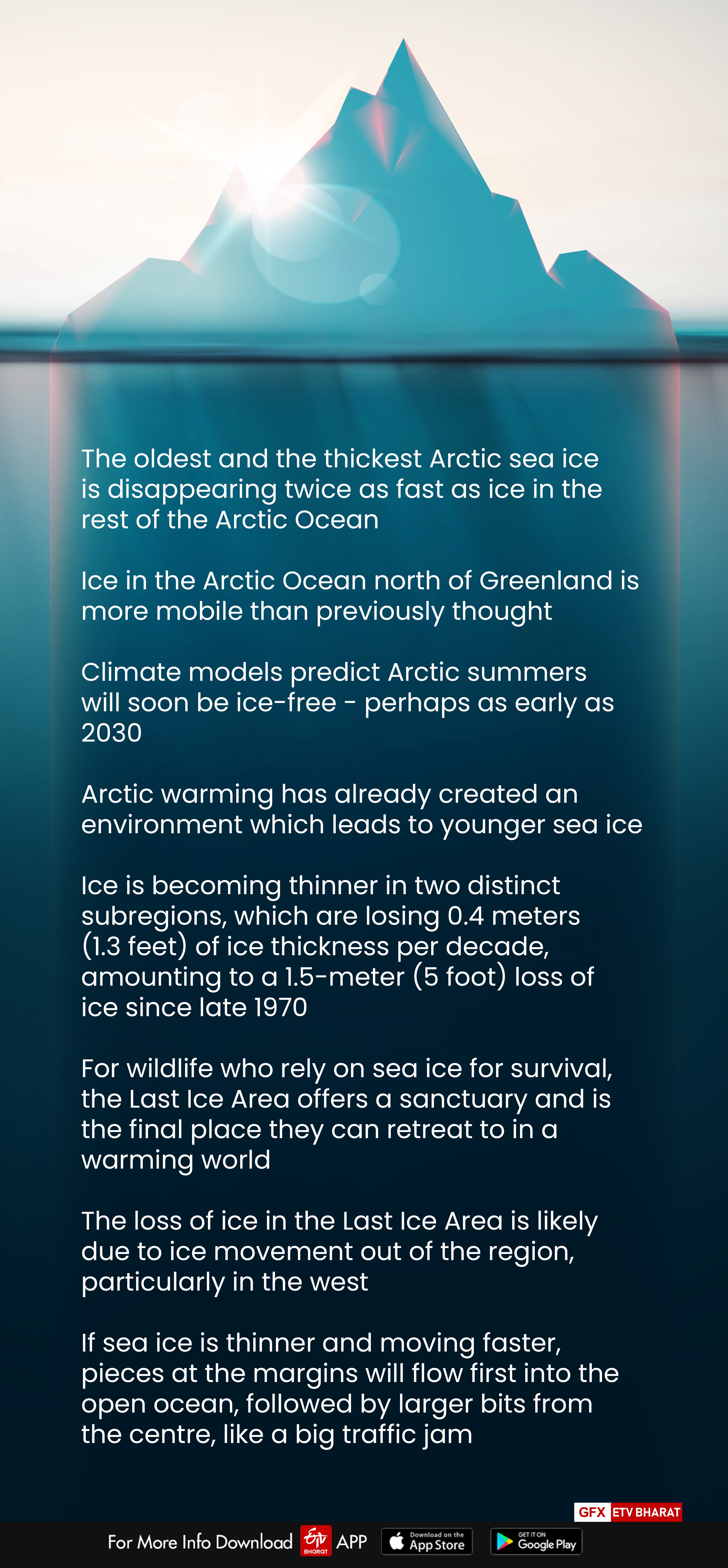Hyderabad: According to a new study in the AGU's journal Geophysical Research Letters, the oldest and the thickest Arctic sea ice is disappearing twice as fast as ice in the rest of the Arctic Ocean.
Ice in the Arctic Ocean north of Greenland is more mobile than previously thought, as ocean currents and atmospheric winds are likely transporting the old, thick ice found there to other parts of the Arctic. As a result, ice mass in the area -the last place researchers think will lose its year-round ice cover - is declining twice as fast as ice in the rest of the Arctic, as per new findings.

Climate models predict Arctic summers will soon be ice-free - perhaps as early as 2030 - meaning less than 1 million square kilometres (386,000 square miles) of summer sea ice will blanket the Arctic Ocean. Arctic warming has already created an environment which leads to younger sea ice.
Also, read: Children in India face higher health burden of climate change: Lancet report
Most ice covering the Arctic is only one to four years old, according to the National Snow and Ice Data Center. As thin, young ice melts in future summers, only a 2,000-kilometer (1,240-mile) arc of ice will remain, stretching from the western Canadian Arctic Archipelago to Greenland's northern coast. In this slice of the Arctic, which experts call the Last Ice Area, sea ice is more than five years old and can measure more than four meters (13 feet) thick.
The new research suggests the Last Ice Area is a dynamic place encompassing two sub-regions where ice thickness fluctuates by 1.2 meters (4 feet) from year to year. Ice is becoming thinner in two distinct subregions, which are losing 0.4 meters (1.3 feet) of ice thickness per decade, amounting to a 1.5-meter (5 foot) loss of ice since the late 1970s, according to the new study.
"We can't treat the Last Ice Area as a monolithic area of ice which is going to last a long time," said Kent Moore, an atmospheric physicist at the University of Toronto in Canada and lead author of the new study. "There's actually lots of regional variabilities."
For wildlife who rely on sea ice for survival, the Last Ice Area offers a sanctuary and is the final place they can retreat to in a warming world. Understanding how the Last Ice Area changes throughout the year could help pinpoint which spots are best suited to provide a refuge for wildlife who are dependent on sea ice, according to the study's authors.
Places with less ice movement, for example, may provide more suitable conditions for a wildlife sanctuary, as the ice will remain longer. The new study presents a context for policymakers to consider when they establish protected areas in the Arctic, Moore said.
The Last Ice Area is home to the Arctic's oldest and thickest ice because ocean currents and atmospheric winds carry patches of floating ice in a circular pattern. These blocks of ice crash into each other and pile up along the northern edges of Greenland and Canada. Researchers, however, know little about how ice in this region moves and melts during the year.
In the new study, the team modelled sea ice cover, thickness and motion across the zone from 1979 to 2018. Their model, based on satellite observations and atmospheric data, revealed two regions with distinct seasonal and inter-annual fluctuations -- one to the east and one to the west.
In both regions, sea ice was thinner and covered less area in the summer and early fall than in the Arctic winter, though ice thickness in the west tended to hit its minimum earlier in the season. Ice motion in the eastern portion of the Last Ice Area appeared to be more stable. Western ice --controlled by winds blowing clockwise -- has begun moving faster, which could be the result of thinning ice.
According to Moore, the loss of ice in the Last Ice Area is likely due to ice movement out of the region, particularly in the west. If sea ice is thinner and moving faster, pieces at the margins will flow first into the open ocean, followed by larger bits from the centre, like a big traffic jam.
Also, read: Sustainable Urbanisation: A major challenge for developing India



